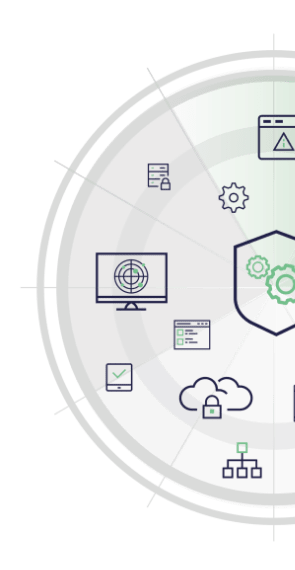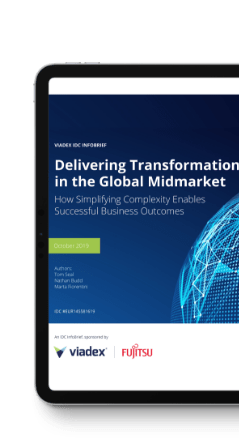Managing your Device Lifecycle Globally – Part 1

DaaS – From Origination to Disposal – A Business Case
The device lifecycle can be described as the comprehensive journey that encompasses every stage of a device’s existence, ensuring efficiency, sustainability, and optimal performance whilst at the same time delivering a highly rated user experience.
It begins with origination, where specific needs are identified, and devices are sourced from reliable vendors. Set up and configuration follow, tailoring each device to meet individual user requirements. Deployment and logistics play a vital role, ensuring seamless delivery at the beginning of the lifecycle and efficient replacements during its active span to every user in every location. Sustainability remains a key focus throughout, with eco-friendly practices in handling devices, packaging, including their end-of-life collection, repurposing, resale, or disposal. Device asset management is a crucial aspect enabling organizations to track the device’s health, conduct regular maintenance, and ensure peak performance for a seamless technology experience and optimum productivity.
A successful Device as a Service (DaaS) lifecycle delivers:
- Improved Efficiency: By carefully identifying specific needs and sourcing devices from reliable vendors, organizations can ensure that each device is selected to match a user role and then delivered against a standard configuration determined by the organisation. This optimization leads to improved efficiency and productivity in the workforce.
- Enhanced Sustainability: The focus on sustainability throughout the lifecycle, including eco-friendly practices and end-of-life collection, re-purposing or disposal demonstrating a commitment to environmental responsibility. This enhances an organisation’s reputation and bolsters their sustainability targets.
- Optimal Performance & Productivity: Through efficient set up, configuration, and ongoing asset monitoring, organizations can ensure that devices consistently deliver peak performance. This translates to better user experiences, reduced downtime, operational effectiveness, and increased productivity.
- Procurement Consolidation Globally: Utilizing appropriate commercial agreements, with a partner that is global and contracts and invoices as a single entity.
- Logistics Management: The efficient delivery at the beginning of the lifecycle, timely replacements if required and end of life exchanges, can lead to cost savings by minimizing disruptions, downtime, and unnecessary expenses.
- Geo-Dispersed Management: Managing a team in different locations, different time-zones with varying compliance and licencing standards is critical to optimal performance and productivity.
- Device Life Extension: Proper asset monitoring and maintenance contribute to prolonging the useful life of devices, maximizing their value as long-term investments for the organization.
- Cost Saving: Effective management of each device through a centralised portal that identifies the location, the age, the health, and visibility of the device.
- Competitive Advantage: A well-managed device lifecycle, with a focus on efficiency and sustainability, can provide a competitive advantage in the market. Customers and partners are more likely to choose an organization that demonstrates responsible and sustainable technology practices combined with maximum uptime and customer retention.
- Reduced Environmental Impact: By adopting eco-friendly practices and proper end-of-life handling, organizations can contribute to reducing their overall environmental impact and aligning with sustainable business practices.
In summary, the device lifecycle, when managed comprehensively end to end delivers a focus on efficiency, sustainability, and optimal performance, creates tangible business outcomes such as improved productivity, cost savings, enhanced reputation, maximum uptime, exceptional user experience, mitigation of risk and a competitive edge in the market. Each step of the journey requires a unique skillset which is why the Device as a Service solution delivered by a trusted geo-dispersed partner, with the expertise to manage the device lifecycle frees up your resources to focus on its core strengths and revenue generation with confidence.
What is a Device Lifecycle – Needs & Challenges
In today’s technology-driven world, efficiently managing the lifecycle of devices is paramount for businesses to remain competitive and productive whilst trying to avoid the costs to support the time and expertise required to support the device lifecycle. The journey of a device, from its initial origination to disposal, encompasses several crucial stages.
A typical origination journey includes:
- Identifying the Need – The device lifecycle begins with identifying the specific needs of the organization or individual users. This involves understanding the purpose of the device, the required specifications, and based on the user’s role. A full device plan to define the business need, sets the foundation for a successful device acquisition process.
The challenge around identification is influenced by gaining clear and accurate insights into the specific device requirements of users or department profiles. Gathering feedback and aligning the needs with budget constraints can be time-consuming resulting in effects on productivity and internal skillset.
- Vendor Identification – Once the needs are identified, the next step is to source a reputable vendor. This process involves thorough research, considering factors such as the vendor’s product range, service quality, pricing, and ability to meet the specific requirements in the right location to ensure that access to stock does not influence their ability to deliver.
Finding a reliable vendor that offers a wide range of devices, competitive pricing, and excellent service can be challenging as the selection process may involve complex negotiations, comparison of options that are not aligned between different vendors, multiple currencies, multiple contracts all whilst trying to ensure that availability will be consistent globally.
- Global License Agreements Aligned to In Country Compliance – Negotiating with the vendor is a crucial aspect of the device lifecycle, ensuring that the vendor has the capability to implement globally covered by a single global contract. Whilst the obvious negotiations are relevant (pricing, suitable warranty terms, and any additional services required), it is often the other issues that impact both the budget and user experience. These require a skillset that understand the complexities of global deployment – ensuring that the device and its associated licenses comply with the regulations of the region / country / territory / state where it will be used are essential to avoid legal and operational complications.
- Allocation and Configuration of the Device – Once the device is procured and its compliance verified, it needs to be allocated to the designated user and their needs with configuration against the standards required by the company. Allocating the right devices to the right users can be a logistical challenge, especially in large organizations with diverse needs and device spread.
Standardisation is key to meet individual employee requirements, which is often manual, time-consuming, and sometimes prone to errors, potentially leading to lost productivity and user dissatisfaction. Very simply, the lack of a standardized approach hampers efficiency, productivity, and consistency across the organization and impacts the entire lifecycle from the beginning of the device life to the end. Misconfigured or incompatible devices can result in technical issues and increased IT support requests, consuming valuable time and resources.
- Ensuring Device Health and Performance – During the active lifetime of the device, which typically spans around 36 months, it is crucial to monitor the device health and performance. Implementing robust device management strategies, such as regular maintenance, updates, and security patches, ensures optimal performance and minimizes potential issues whilst at the same time diminishing the risk.
Inconsistencies in device configurations can lead to security vulnerabilities and compliance risks further and furthermore, the lack of timely device replacements or upgrades can hamper employee performance and hinder organizational growth.
- Swift Replacement Support – Despite proactive maintenance, unforeseen circumstances may arise, leading to device failures. To maintain uninterrupted productivity, having a reliable replacement support system is essential. The Viadex DaaS solution is structured to deliver a replacement device within 24 hours (working days) to ensure minimal disruption and keep users productive.
Ensuring a quick replacement for failed devices within 24 hours requires a robust support system and coordination with vendors. The downtime caused by device failures can impact productivity and user satisfaction.
Efficiently navigating the device lifecycle requires a well-structured approach, attention to detail, and reliable partnerships. By identifying needs, sourcing the right vendor, ensuring compliance, allocating devices appropriately, and providing reliable support, businesses can optimize their device management process and foster a productive and seamless technology experience for their users. Embracing these best practices empowers organizations to make the most of their technology investments and stay ahead in today’s competitive landscape.




